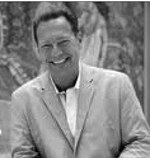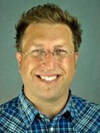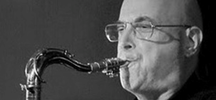BARRY HARRIS • LIKE SOMEONE IN LOVE
(After the introduction) It’s “Like Someone in Love,” a great standard. Sounds like Barry Harris or someone definitely influenced by him. Barry is one of the last great true boppers alive. To hear him in trio format playing standards like this is classic Barry Harris. I could listen to this type of playing all day. MCCOY TYNER • REACHING FOURTH These guys are swinging hard. I like it a lot. The piano player has some chops. Definitely has some McCoy Tyner influences with the use of fourths and pentatonic scales. (After learning that it is McCoy Tyner) I have that record. Normally you can hear McCoy play one bar and you know it’s him, but this is a little older release. BENNY GREEN • OPUS DE FUNK I’m very familiar with this tune, but can’t remember the title at moment. There are some lines in there that sound like a piano player I have heard before but I can’t identify who it is. Is this Benny Green? I appreciate the fact that he is rooted in tradition and has great respect for the musicians that came before him. The integrity of his playing and his attack are like no one else. I can hear him now. That’s Benny, and I love it! HANK JONES • BEAUTIFUL LOVE I’m trying to think of the title of this tune. It’s a great minor key tune. This could be a lot of different players. I’m thinking an older player from Detroit — Barry Harris or Tommy Flanagan? Is it Hank Jones? Hank has such an elegant touch. He never gets too carried away but he has one of those styles that is always perfect for the song. CEDAR WALTON • DEAR RUTH It’s a very relaxed player. I’m thinking maybe Cedar Walton. I have a great deal of respect for his playing. Cedar is one of the true masters that we lost several years ago. I can usually tell Cedar Walton’s playing because he has some distinctive stylistic things he always brings to the music. STU CALHOON • BLUE AND GREEN (After the introduction) That’s a dear friend of our local jazz community — Stu Calhoon. He’s killing that classic Bill Evans/Miles Davis tune. Stu was such a beautiful and sensitive player. I’m glad you played this for me. And a great rhythm section, too — Susie Miget on bass and Pete Simonson on drums. GEORGE CABLES • LTD (Immediately) That’s George Cables playing a tune associated with the great Dexter Gordon — LTD (Long Tall Dexter). It’s George all the way. One of my favorite piano players. MULGREW MILLER • WHAT AM I HERE FOR This is a classic Duke Ellington tune. Once again, this player‘s attack and lines sound very familiar to me. (After learning that it is Mulgrew Miller) Because he was a sideman for so many years, Mulgrew had the versatility to play anything and with anyone. I had the opportunity to see him with Kenny Washington and Lewis Nash in Cambridge, MA, a few years back. He was a big powerful man like Oscar Peterson and McCoy Tyner, but when he sat on the piano he could play with tremendous sensitivity. Like the tune we’re listening to now, everything Mulgrew played was perfect. AS THE HOST:
Be Flexible
open up these opportunities for guests in the 2nd and 3rd sets.
musicianship of your guest. Let them feel comfortable. Be Friendly
musician is comfortable, they will probably play better & create a more enjoyable experience for you and the audience.
sight reading skills, which may be put to the test at times like these.
Be Focused
this higher level of musicianship. AS THE GUEST: Be Flexible
play and will find the right time to work you into what they are doing.
around and play more, they’ll ask. Quit while you’re ahead!
sure that they remain patient and don’t become unruly with discontent.
Be Friendly
good graces of the band. The house band is giving you a chance to perform without securing the venue or a band, so keep that in mind. Be Focused
in control of the tune selection.
transposed part. Work out melodies and changes through transposition. Whether it’s in music or in life, saxophonist Frank Perowsky possesses the skills of a master improviser. “You never know what’s going to happen next,” explained Frank, as he shared some highlights from a career that began as a Roosevelt High student in Des Moines.
Catching The Jazz Bug AsA High Schooler In Des Moines Frank remembers being introduced to jazz through his mother’s record collection. Frank’s mother, Elizabeth Werblosky, was a popular Des Moines dance teacher who had the latest records for ballroom dancing — Fats Waller, Tommy Dorsey and Frank’s favorite, Benny Goodman. That explains why Frank took up the clarinet at an early age, adding the tenor saxophone when he was in 11th grade. “Des Moines had a lot going on and I was fortunate to have a mother who encouraged me to take advantage of it,” explains Frank. He saw Harry James, Tommy Dorsey and other big bands at Tom Archer’s ballrooms; Benny Goodman in Ames, Louis Armstrong at Hoyt Sherman —thanks to Frank’s mother, he still has the original poster from that concert; and many great local players on Center Street. Like most local musicians at the time, Frank’s first professional job was at the Elks Club with the Ralph Zarnow band. Later he worked with groups led by Don Hoy, Val Carroll and Helen Gale. There were also jobs with high school pals like trumpeter Jerry Stenstrum and bassist Ross Cornelison. Frank jokes that his very first arrangement was for a band that Ross performed with called Allen and the Oo-Ya-Koos. Frank not only learned on the bandstand, but he had the opportunity to take lessons from local jazz legend Ellsworth Brown. According to Frank, he was the best teacher an aspiring jazz musician could ever ask for. As he prepared for his graduation from Roosevelt High in 1953, Frank knew what was next on his musical journey — Julliard School of Music in New York City, — but he had no idea where that experience would take him. Making the Scene In New York City Julliard did not have a jazz program when Frank was a student in the mid 1950s, but New York City provided him with a solid jazz education. He spent many nights in the clubs, especially the original Birdland, soaking it all in. “I majored in Charlie Parker, Sonny Rollins, Stan Getz, Bud Powell and all the greats working the club scene back then,” boasts Frank. He was also fortunate to find several Julliard students who shared his passion for modern jazz. and together they supplemented their formal education by starting a rehearsal band. One of those musicians is a fantastic trombonist and arranger Tom McIntosh, who asked Frank to play on his 2004 recording, “With Malice Toward None.” Between his formal education at Julliard and the informal education in the clubs and combos, Frank was ready to live the life of a professional musician in New York City — in other words, seeing what would come next. What came next for Frank were performance opportunities with some of the big bands he first heard in Des Moines — The Elgart Brothers and Woody Herman — and summer gigs in the famous resorts of the Catskill Mountains. The more musicians he met, the more opportunities came his way, like a chance to work six nights a week with Peggy Lee in the Americana Hotel on Seventh Avenue. After several years of working the clubs and hotels, Frank became a substitute for a colleague in a Broadway show orchestra. This led to him performing in hits such as Promises Promises, The Wiz, 42nd Street and Barnum. During that time, Frank also developed a reputation as a valued composer and arranger. On the advice of a fellow musician, he brought his arrangement of Bud Powell’s “Bouncing With Bud” to a Buddy Rich recording session. “One of my biggest thrills was having that arrangement recorded on Buddy’s “Class of 78” record,” says Frank. What happened next would take Frank around the world. In 1981, he was recommended by a fellow sax player for a tour of Australia, Japan, Manila and Hawaii with Liza M. Recording sessions, concerts around the country and an unforgettable performance at Carnegie Hall followed. After a tour of South America in 2009, Liza reduced the size of her band which ended Frank’s 28-year relationship with Liza, and it was back to waiting for more adventures. There’s Always Something New Coming Next Now in his 80s, Frank is still excited by what will come next in his career. There’s the recent release of a CD featuring a big band co-lead with his son, drummer Ben Perowsky; his steady Tuesday nights big band sessions at the Bahai Temple in Manhattan; more composing and arranging assignments; not to mention play dates with his granddaughter in Brooklyn and visits to see his son, Eric, and his family in Kansas City. Frank is always excited to return to Des Moines, which he did in 2019 to accompany vocalist Jay Clayton at Terrace in Waukee. “I always look forward to seeing my Hebrew school classmates from Temple B’nai Jeshurun, my high school gang from Roosevelt, my extended family who still in the area and the many Des Moines jazz musicians I have worked with over the years. Whatever comes next in his career, Frank will be ready for it! |
Categories
All
Archives |




 RSS Feed
RSS Feed